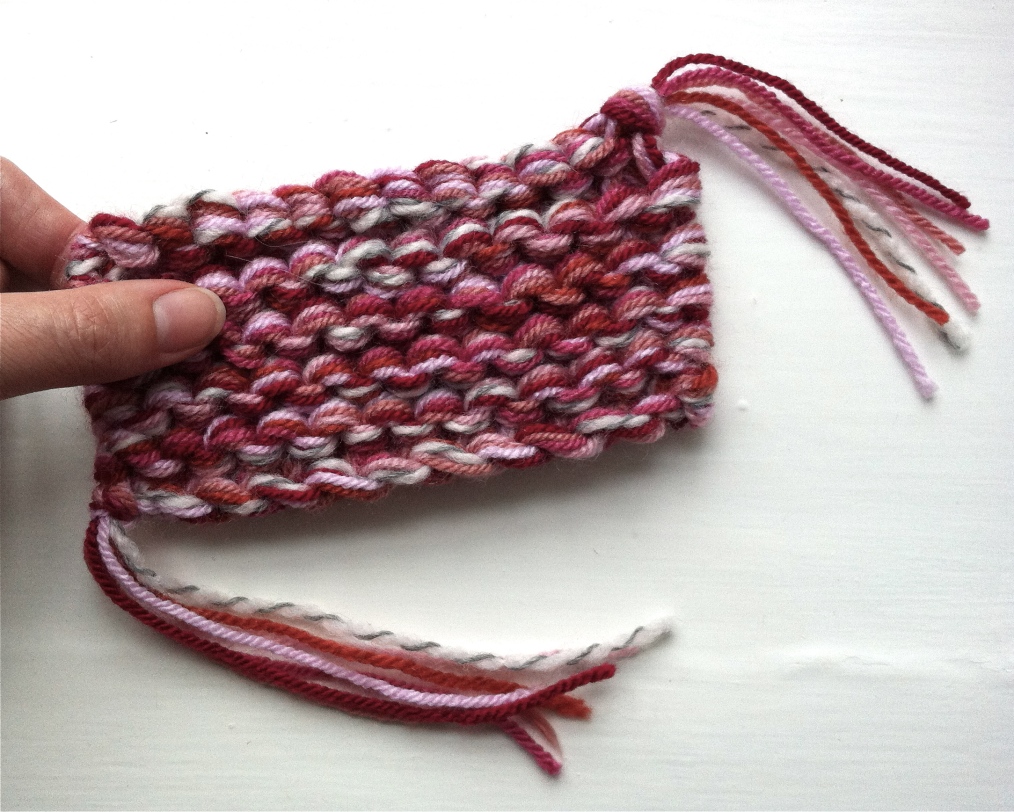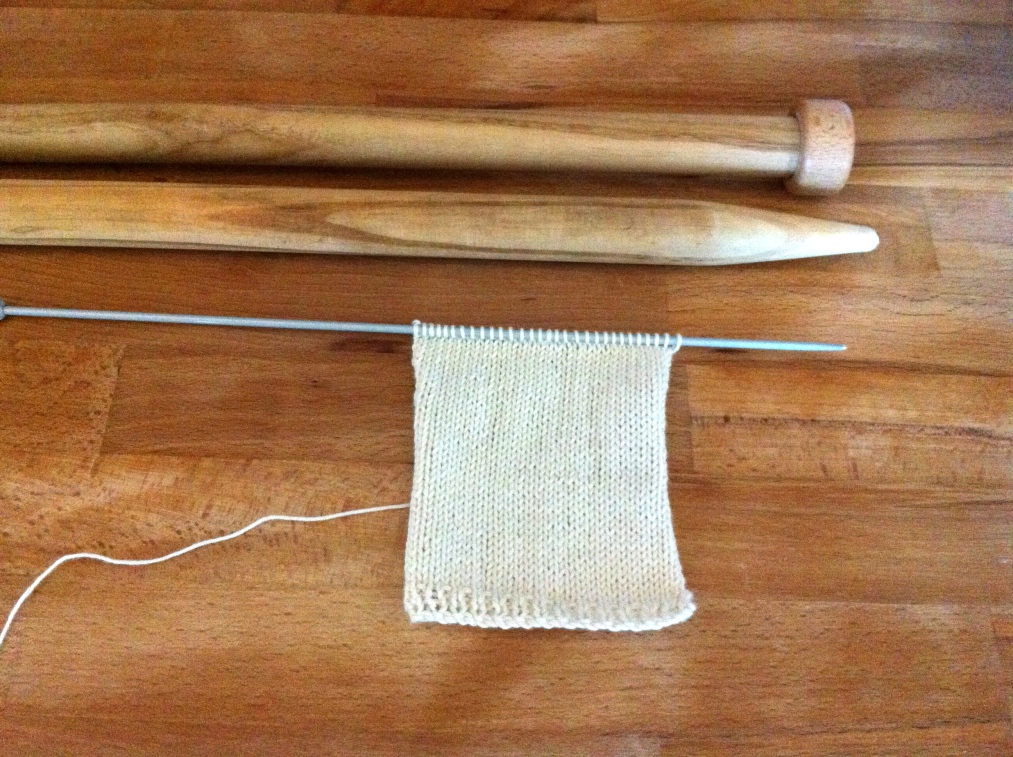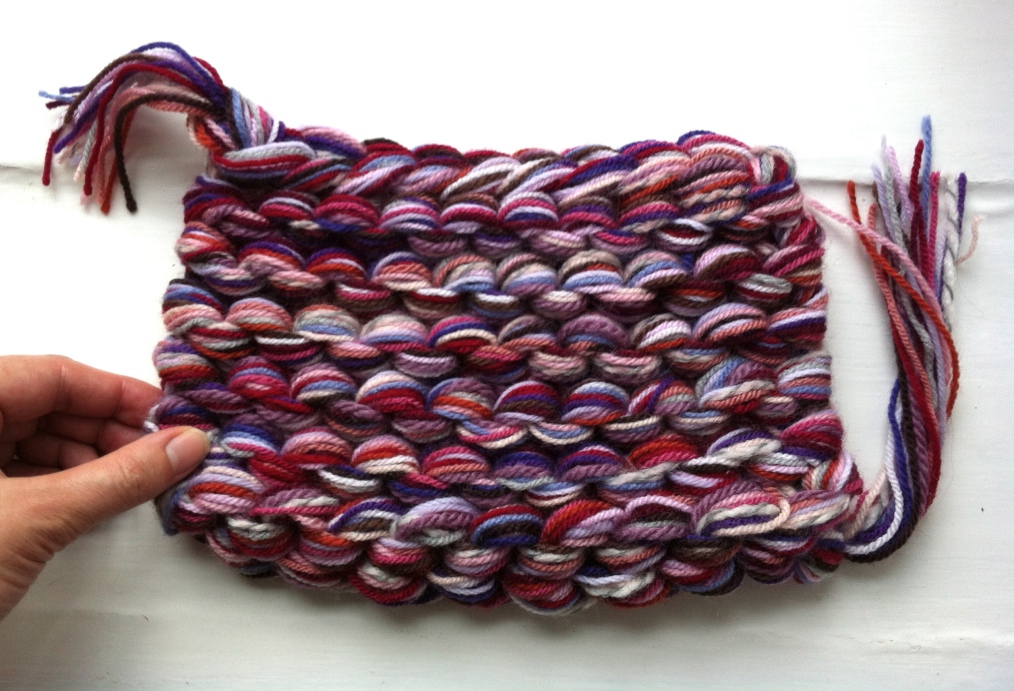These are my new fish dishcloths. They could be face cloths too, or washing cloths at bath time. Kitchen or bathroom, they are made to swim in water! The yarn is super soft, 100% organic cotton. This was a real find: it’s hygienic, naturally clean, which helps to protect against allergies and respiratory problems (so says the blurb). The wash and wear properties are far superior to normal cotton, and it’s softer too. It certainly feels wonderfully soft on your fingertips.
I wanted to write a quick and fun knitting pattern for the fish. I realised that for a heavy-wear item like a cloth, it probably wasn’t a good idea to sew anything on. I didn’t want any fussy details with threads to hide, especially when the wrong side of the work would be so visible. All the detail had to be knitted in, in one go. That way, the wrong side would be relatively neat and uncluttered, and there would be no chance of any sewing gradually coming unravelled after some heavy use.
I really enjoyed playing with these fabulous bright colours!
Next job is to lay out the pattern and get it listed.
**Update 24 April 2020 – pattern is available on Etsy and Ravelry**
I have another fish design in development…very excited! Coming soon…
Till next time,
Happy knitting,
L x












